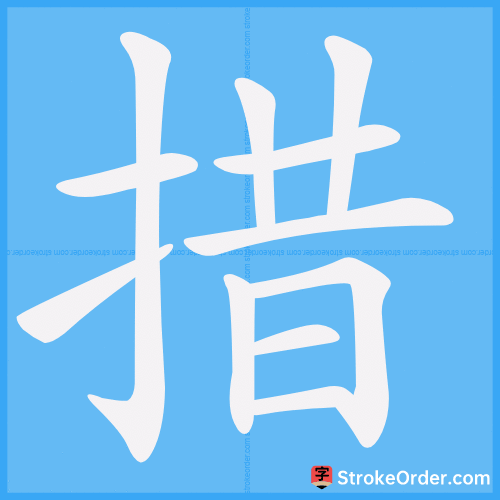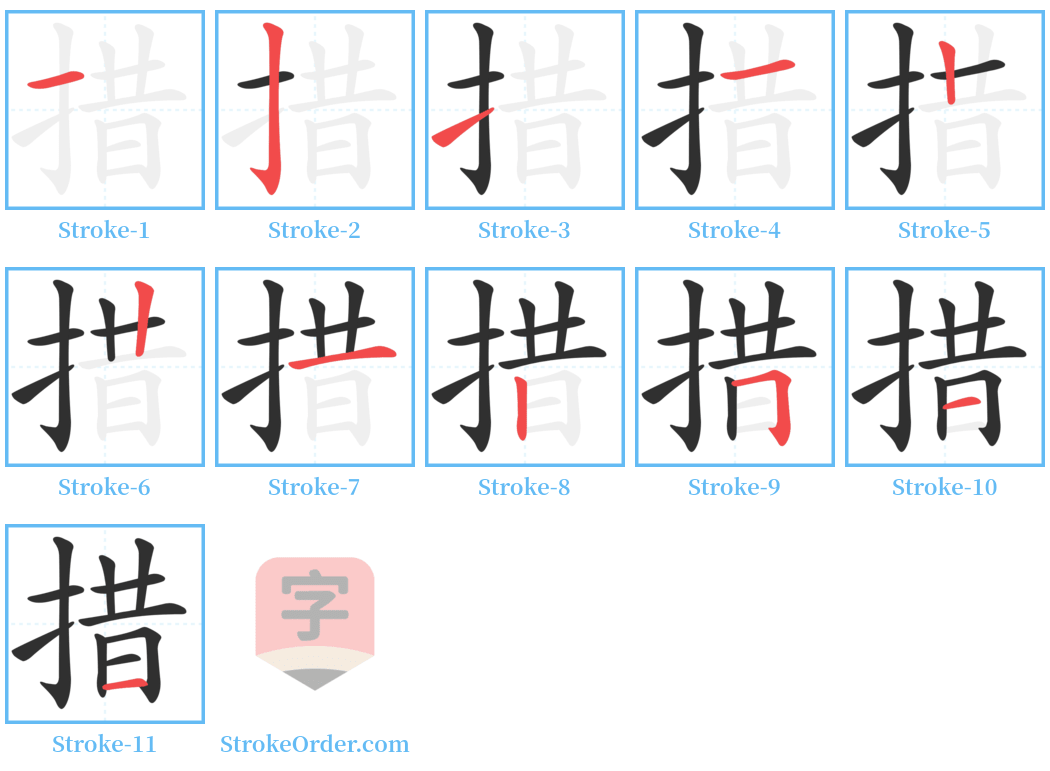措 Stroke Order
Animated Stroke Order of 措

Stroke Order Diagrams for 措

Step-by-Step Handwriting Guide for 措

Learn to Write Chinese Characters with Video Tutorials
Watch the video of writing the Chinese character "措", learn the correct stroke order (笔顺) of the character "措", and master the standard way of writing the character "措".
Free Printable Handwriting Practice with Stroke Order: 措
Printable Writing Practice Worksheet of "措" in Portrait Orientation (Tian Zi Ge)

Printable Writing Practice Worksheet of "措" in Landscape Orientation (Tian Zi Ge)

Information of 措
Pinyin
cuò
Radical
扌
Strokes
11 strokes
Usage
★★★★★
Definition
put in order / arrange / administer / execute / take action on
措 [cuò]
(verb)
【Original meaning】: to put in place, to arrange.
1. 安放,安排: to place, to arrange.
Examples:
- 措手: to get started.
- 措辞: to choose words.
- 措置: to arrange or manage.
- 措身: to settle oneself.
2. 筹划办理: to plan and handle.
Examples:
- 措施: to implement (measures).
- 措办: to handle (affairs).
- 筹措: to gather resources.
- 举措失当: inappropriate actions.
3. 弃置: to discard or abandon.
Example:
- 刑措: abandonment of punishment.
【Synonyms】
1. 同本义 (put in place):
- Example: 指(starts with) the "put in place".
2. 处理,安排 (handle):
- Example: 措注 (to deal with).
3. 筹划办理 (make plans):
- Example: 筹措 (to raise).
4. 施行; 用 (carry out; use):
- Example: 措施 (implementing, facilities).
5. 废弃; 搁置 (abandon; abolish; discard):
- Example: 柳宗元 in "断刑论下": to drive people across the world into crime, then delay and slow down to foster their negligence, this is why punishment is not implemented.
【Note】
- The character "措" has been constructed from a phonetic and semantic compound, combining "手" (hand) and the phonetic element "昔".
- It is often used in various contexts suggesting organization, management, execution, and sometimes abandonment.
panic-stricken (idiom) / to be in a flustered state / also written 張惶失措|张惶失措[zhang1 huang2 shi1 cuo4]
Input Method for 措
Pinyin
cuo4
Wubi
rajg
Cangjie
qta
Zhengma
dek
Four Corner
54061
Unicode
U+63aa
Same Pronunciation Characters